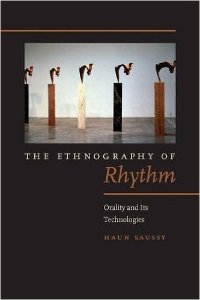Edgard Sienaert published an article with this title in the journal Oral Tradition, 5/1 (1990).
It includes a wide bibliography of works by and about Marcel Jousse.

Edgard Sienaert published an article with this title in the journal Oral Tradition, 5/1 (1990).
It includes a wide bibliography of works by and about Marcel Jousse.
Disclaimer: This translation has not been edited. If you see anything that could be improved, please let us know.
“What will help me, dare I say it, to shape my thinking? What’s going to make it fluid or stiff? It’s my gesture. I’m driven by my gesture. It’s not words that drive me, it’s my gesture. And that’s why, without my noticing it, some of our spectators can say to me: ‘Yes, we know what you’re thinking. Before you’ve expressed it, you’ve played it out’.
And that’s why the child takes the real world with his whole body and then re-plays it and then gives you the oral transposition of this intussusception of reality, but always with this stupefying and inexplicable interference of the need to compare. I still haven’t been able to explain it to myself. I’m amazed myself at the definition I’ve been forced to give: “Man is an animal that makes comparisons”. The little child in front of the object mimics it, and immediately the comparison game begins. He’ll give the closest approximation to the gesture he’s seen, which is one of the joys of his expression.
Does a child see leaves falling? It’s not the leaves that strike him, but he has seen the feathers falling from the hen as she snorts, and in front of this scattering of little leaves, he replays this scattering of little feathers and says: “Mommy, look at the feathers falling from the tree”. This is one of the most beautiful examples of children’s gestual expression.
Perhaps this is where the solution lies. Leaves and feathers make the same gesture. There’s something very fine, twirling, gliding, whirling, swirling, very softly, and then it settles. The child grasps it, and it’s through the mimicry of the two objects that the connection is made, from which springs for us what we call poetry.
We need to collect all these children’s words, which would cast a totally unexpected light on the psychology of language and expression. A child’s beautiful style is his spontaneous style, not the one we make him do at school. We have books about children’s “writing”. But a child’s real writing doesn’t take place in front of the paper and inkwell; it happens at playtime, when he’s playing with his little friend. This is where an unexpected style emerges, made up of short sentences full of reality and playfulness. The child plays with metaphors as he plays with his gestures, because gesture is metaphor.”
Excerpt from a lecture by Marcel Jousse, ‘Le geste mimique et la création de la métaphore‘, given at the Sorbonne, January 14, 1932.

Haun Saussy is University Professor of Comparative Literature at the University of Chicago.
Presentation of the book :
http://fordhampress.com/index.php/the-ethnography-of-rhythm-paperback.html
Powered by WordPress & Theme by Anders Norén